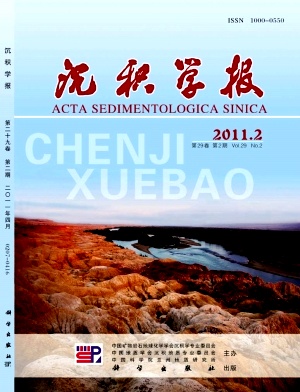Influence of Different Pretreatment Procedures and Measuring Time on the Mineral Particle Size of Peaty Sediments in the Yangtze Estuary
- Received Date: 1900-01-01
- Rev Recd Date: 1900-01-01
- Publish Date: 2011-04-10
-
Key words:
- grainsize measurement /
- peaty sediments /
- pretreatment method /
- measuring time
Abstract: One or two very low subpeaks appear in the coarse end of the grain size differential curves of the peaty sediments from the Yangtze Estuary with the conventional pretreatment method, which is difficult to interpret. The experimental results indicate that different pretreatment procedures and measuring time has obvious influence on the grainsize distribution. In order to obtain accurate measurement, three different methods are used in the present study. In Method 1, sample is immersed in a beaker successively by the distilled water and boiled with 10 ml 10% hydrogen peroxide (H2O2). The beaker is filled up with distilled water and supernate is then removed after settled for 24 hours. Repeat the settlement and removal to eliminate the surplus H2O2. The remained sample is then dispersed by (NaPO3)6 and ready for measurement. In Method 2, which is also called conventional method, samples are immersed by 10ml 10% hydrochloric acid (HCl) in addition to the H2O2. Other steps are the same as in Method 1. In Method 3, the difference from Method 2 is that concentrations of both H2O2 and HCl are increased from 10% to 30%, and other steps are the same as in Method 1. The results show that the Method 1 is preferred and grainsize differential distribution measured in the third minute since they are put in the lasergrain equipment should be selected. Compared with both in the first and the second minute, the grain size measured in the third minute is ideal, which possibly indicate that the flocculated particles need three minutes to disperse. The coarse composition demonstrated in the differential curves might be resulted from the insufficient pretreatment. Our experimental result of mineral grainsize measurement of peaty sediments suggest that clayey silt and silty clay, with mean grain size ranging between 9 μm and 25 μm, prevail and reflect the relative stable environment of still water.
| Citation: | ZHANG Ruihu. Influence of Different Pretreatment Procedures and Measuring Time on the Mineral Particle Size of Peaty Sediments in the Yangtze Estuary[J]. Acta Sedimentologica Sinica, 2011, 29(2): 374-380. |






 DownLoad:
DownLoad: